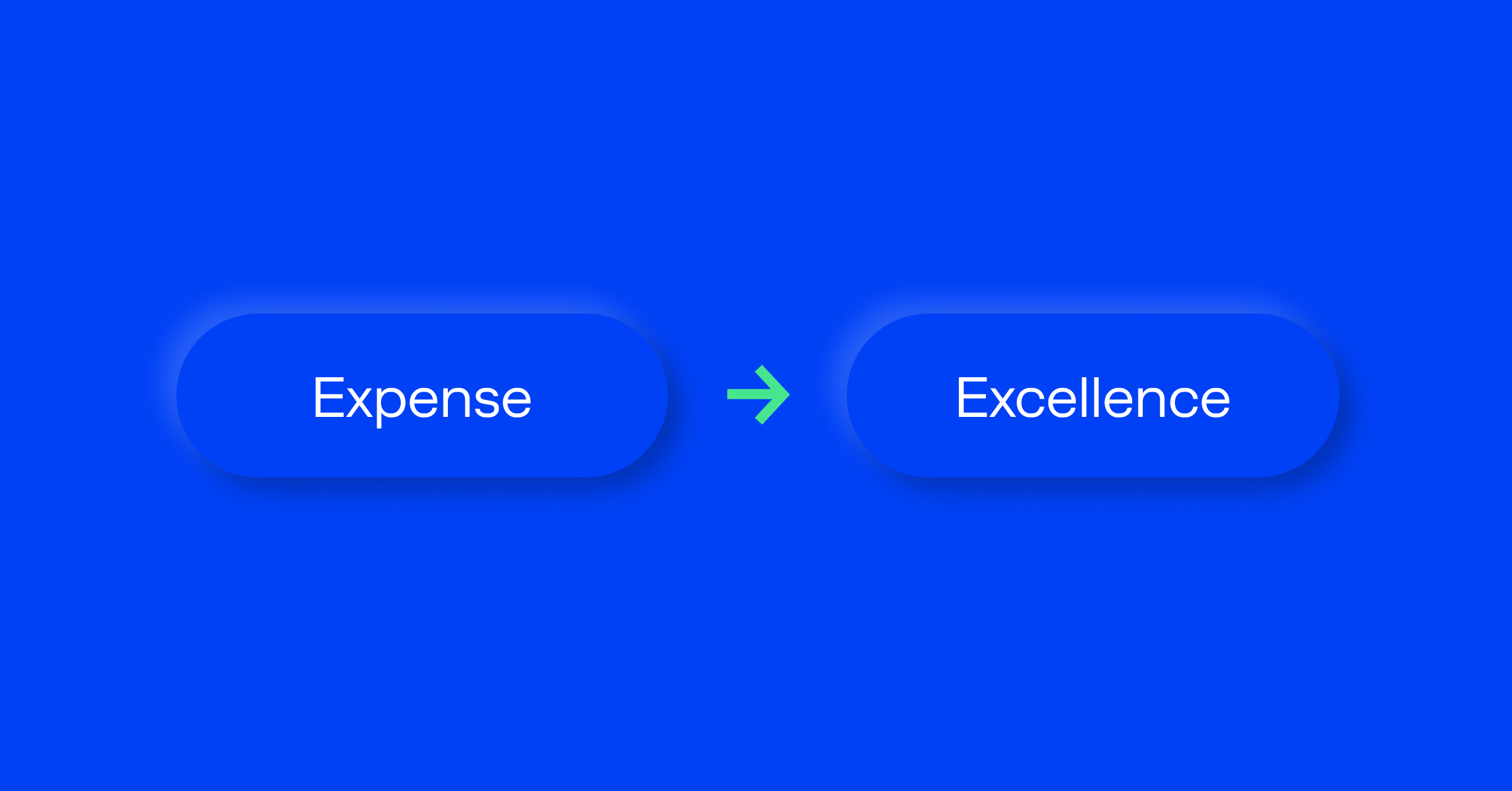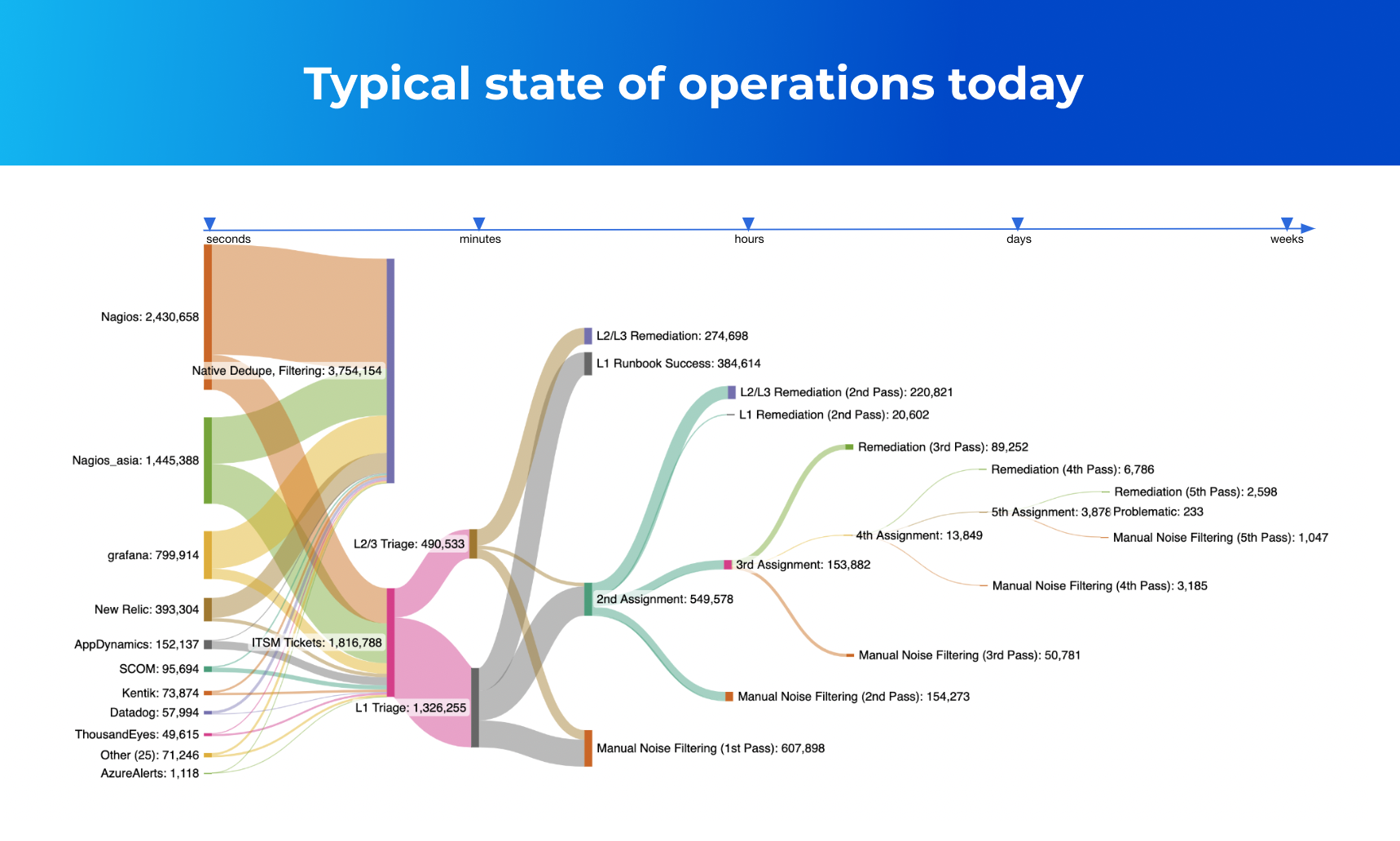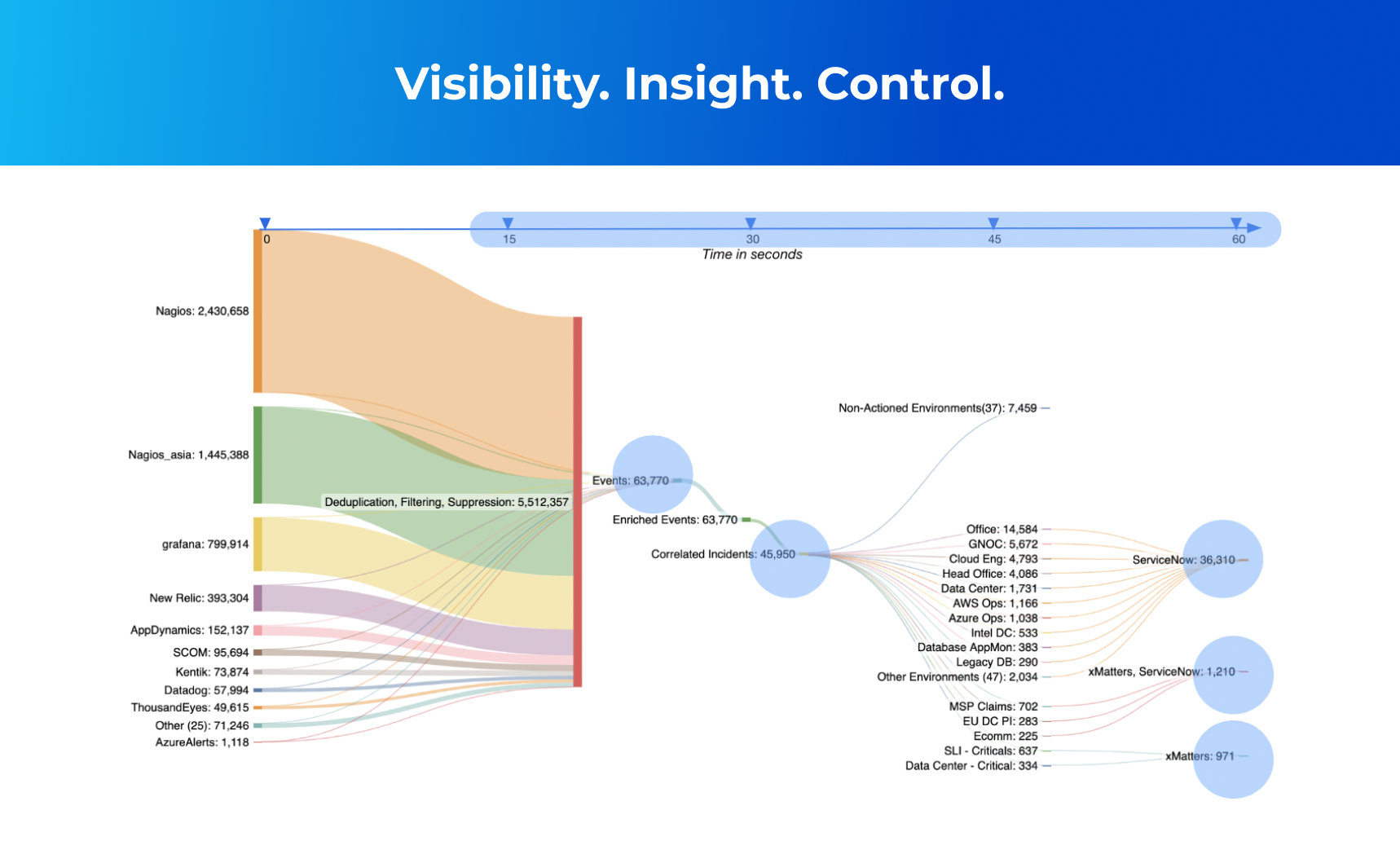Transform ITOps through strategic IT cost optimization

Most organizations view their tech and network operations center and their budgets as simply the cost of running their internal and external IT services. However, through IT cost optimization, you can improve how your Ops center team responds to service issues and save valuable resources too.
So, what specifically is IT cost optimization?
It’s beyond mere expense optimization — it’s a never-ending journey that maximizes business value and boosts operational efficiency, all while empowering your Ops center team to respond swiftly to service issues.
For AIOps specifically, cost reduction means obtaining optimal pricing, features, and purchase terms to streamline your platforms, applications, processes, and services. This, in turn, allows you to leverage automation and digitization to improve efficiency in your IT and business operations.
How can AIOps be used for cost optimization in IT operations?
BigPanda asked CTO Jason Walker and Conor Castronovo, Sr. Analyst Relations Manager, to share more about achieving ITOps cost optimization in an insight-packed webinar. They discussed how cost optimization comes from addressing three critical areas:
- Streamlining and automating ITOps activities to reduce spend
- Revealing your hidden Ops costs
- Understanding the Pros and Cons of Different AIOps Pricing Models
Streamline and automate ITOps activities to reduce IT spend
One of the key factors in IT cost reduction is running an efficient ITOps practice. You can reduce complexity and eliminate unnecessary expenses by standardizing platforms, applications, processes, and services. Walker provided three key ways to manage ITOps spending using AIOps:
- Streamline ticket resolution: Identify and address the causes of repeated ticket bounces. You can minimize resource requirements and cut costs by resolving issues efficiently and preventing recurring incidents.
- Improve alert quality: Generate high-quality alerts that provide meaningful and actionable information. By reducing false alarms and ensuring alerts accurately reflect critical issues, you can optimize engineer productivity and minimize the impact of incidents.
- Measure your “ITOps tax”: i.e., the total cost to run services. Quantify the time and resources spent on handling alerts and incidents. Look for inefficiencies that drain resources, burn out teams, and lead to high staffing levels. Tackling these hidden expenses to streamline operations, boost efficiency, and optimize your IT budget for success!
In short, start by measuring the impact of alerts and incidents on your NOC and L2/L3 resources. Define and implement actionable, high-quality alerts that further reduce the time and manual workflows to respond to issues in your IT environment. Then, invest in the right tools and automation technologies to streamline workflows and reduce operational overhead.
Reveal your hidden Ops costs
Often, organizations overlook the invisible costs embedded within their operations. Building upon months of data collection and rigorous analysis, BigPanda was able to put together a Sankey workflow chart (Figure 1 below) that provides a comprehensive snapshot of the typical organizational landscape, tracing the lifecycle of events from source systems to issue resolution. This diagram shows how ITSM tickets are created from each alert, the manual steps taken, countless escalations, and the duration of each step from L1 to L2/L3.
Figure 2 illustrates the impact of using an AIOps platform. It dramatically reduces alert noise and identifies the hidden and long-term expenses associated with manual workflows supporting availability and reliability across infrastructure, networks, cloud applications, and application development.
By examining the effort invested by engineers and operators at different levels (L1, L2, L3), we uncover the stark contrasts in costs between failure-prone systems and reliable, high-availability ones. Surprisingly, most organizations need more visibility into these disparities, and without this visibility face inefficiencies and the potential for adverse financial impact.
[Figure 1: Sankey workflow showing the typical organizational landscape and event lifecycle]
[Figure 2: Sankey workflow showing the impact of using an AIOps platform]
Significant savings can be achieved by identifying non-actionable noise and optimizing monitoring spend. More than just filtering out the noise, this workflow also unveils the critical phases of incident resolution, highlighting the pathways of standardizing ITOps workflows and the potential cost benefits of reduced tickets, escalations, and FTE improvement with improved service and product availability.
Understand the pros and cons of different AIOps pricing models
When it comes to AIOps pricing options, there’s pay-as-you-go pricing (flexible but hard to predict), subscription pricing (predictable but requires regular renewal), and perpetual pricing (immediate value but lacks pricing flexibility). To focus your spend on where it’s needed most, consider the stage of your AIOps maturity journey. If you are new to the benefit of AIOps, your understanding of usage patterns and budgets may lend itself better to one model vs. replacing a vendor with an established budget.
Figuring this out can be daunting, which is why BigPanda provides customized demos focused on your business and your exact use case.
Turn your tech ops center into your cost savings center
Discover the hidden potential of your tech and network operations center with IT cost optimization, the practice of reducing spending while optimizing your business value. Learn more by watching our full Cost Optimization webinar on-demand or connect with our solutions team to discover which pricing model fits your needs and how to ensure your AIOps is fully cost optimized.






